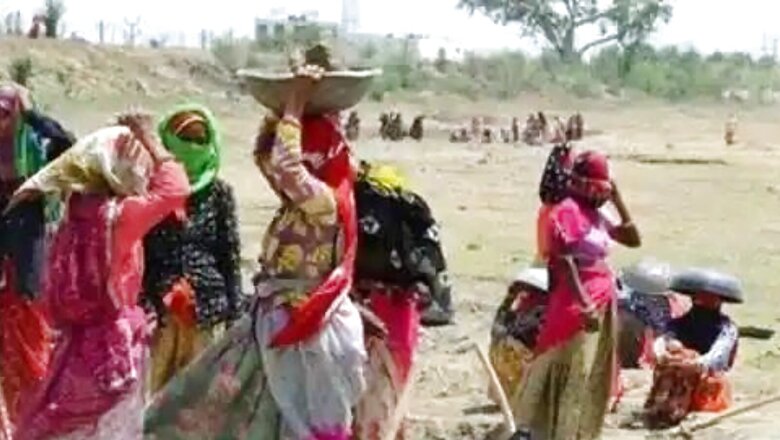
views
Digitally capturing the attendance of all workers under the Mahatma Gandhi National Rural Employment Guarantee Scheme has been made universal – to be used at every place where the scheme is implemented – from January 1, 2023.
A new directive was issued by the ministry of rural development to all states and union territories on December 23. The order said it was mandatory for all work sites to register attendance on the mobile app – National Mobile Monitoring System (NMMS) – irrespective of the number of workers engaged except for ‘individual beneficiary scheme/project’.
Until now, only those sites with more than 20 workers were required to mark their attendance on the app. This required uploading two time-stamped and geotagged photographs of workers. The Centre started this as a pilot project on May 16, 2022, citing issues such as corruption, accountability and duplication in muster rolls.
But the pilot project received much backlash as both workers and activists complained about its implementation – from the staff (such as mates/supervisors) not being equipped with smartphones to lack of technical or logistical support such as payment for internet connection and poor connectivity. The Centre, which is making efforts to tighten the scheme across states, has flagged issues such as ghost accounts and misuse of funds on the ground.
People’s Action for Employment Guarantee (PAEG), a group of activists advocating MGNREGA since 2004 – slammed the order saying this was not going to weed out corruption and will only discourage workers from taking up work.
“This directive is completely flawed, as the entire NREGS depends on measurement of work. This digital capturing is already causing a disaster in states, where it was under implementation. For instance, in Rajasthan, photographs of workers coming to the job are not being uploaded for issues like poor internet connectivity and, hence, the wages are not even half of what it should be for the number of days they have worked. Second, even if they do have to get photos, where is a system for monitoring these? Who is going to verify crores of photos each day? This is not working already, and making it universal is an even bigger disaster,” said Nikhil Dey, a PAEG member.
There are nearly 15 crore active workers under MGNREGS. The latest development is expected to check any leakage in the programme and bring in more transparency, as per the government. The Centre says this increases citizen oversight of the programme besides potentially enabling processing of payments faster and is also expected to stop any bogus attendance of workers though fake entries in physical registers and ensure only genuine ones on the job get paid and the attendance is captured in real-time. There were also concerns that the physical register system can be manipulated, which could lead to pilferage of MGNREGS funds.
The MGNREGS is a demand-driven wage employment scheme, which guarantees 100 days of unskilled work per household in rural areas. The demand for work had exponentially increased during the pandemic years. For lakhs of people who lost their jobs, wages under the scheme were the only source of basic income security.
Read all the Latest India News here



















Comments
0 comment